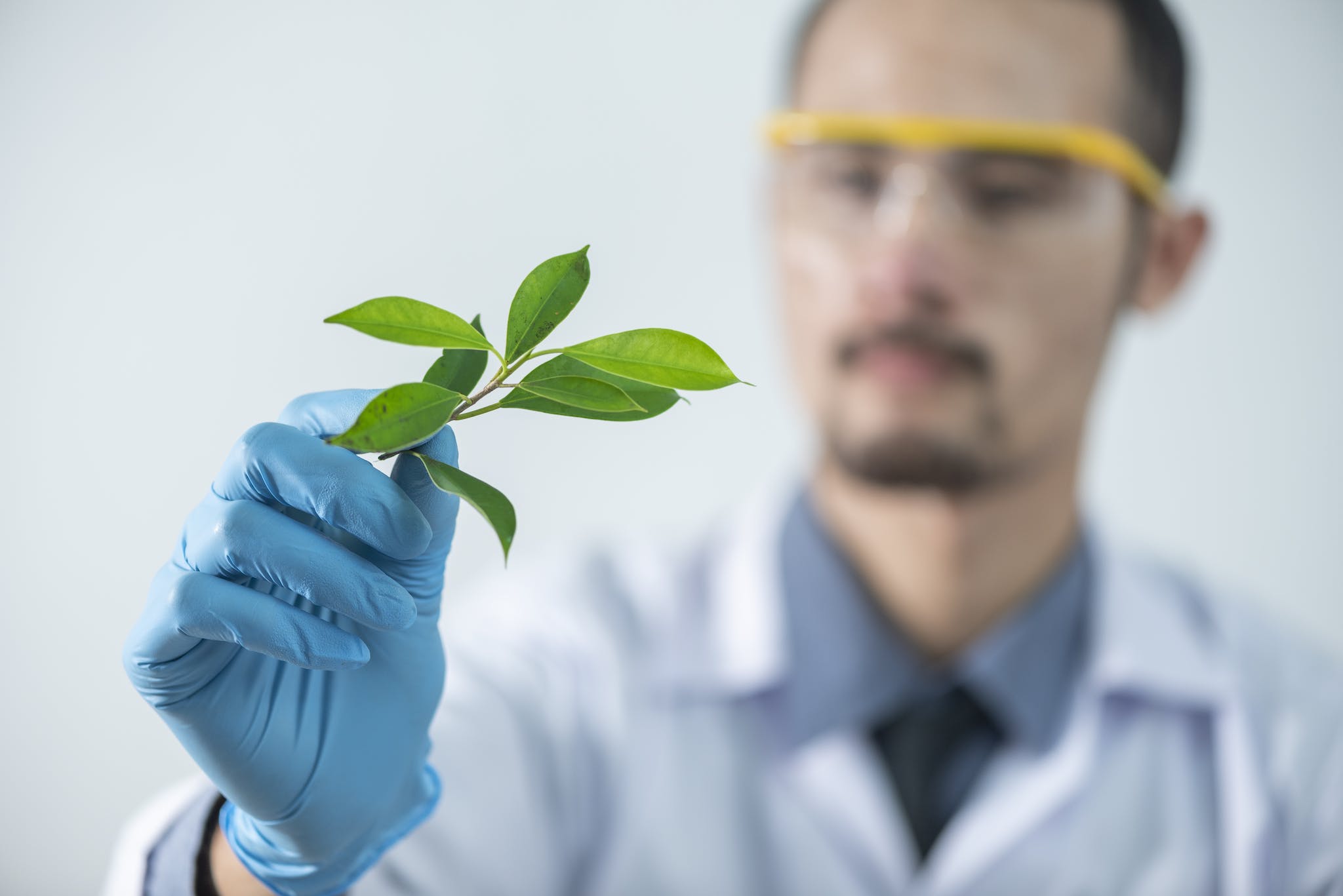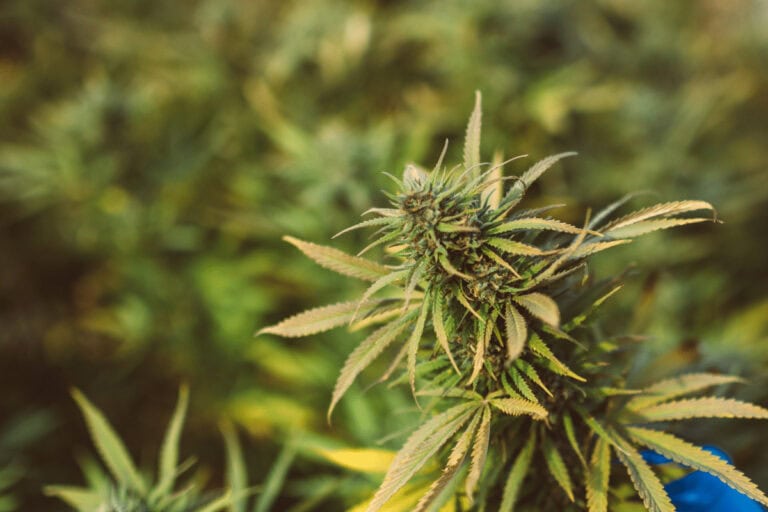CBDA to THCa Conversion: Understanding the Process
Cannabidiol acid (CBDA) and tetrahydrocannabinolic acid (THCa) are the rockstars of the cannabis world, with their own special magic and health benefits. Think of raw cannabis as a hidden treasure; CBDA and THCa are the sparkling jewels inside. When you turn up the heat, something awesome called decarboxylation begins, transforming these acids into the well-known CBD and THC. Understanding this change from CBDA to THCa is key—it unveils the true strength of your stash, guiding you to the best strain for what you need. Explore how a dash of heat can totally change the game in the world of cannabis—it’s like magic!
- Cannabis Plant Overview
- Chemistry of Cannabinoids
- CBDA to THCa Conversion Process
- Analytical Techniques
- Practical Applications and Implications
- Legislation and Regulation
- Cannabis Plant Cultivation and Harvesting
- Advanced Topics in Cannabinoid Research
- Frequently Asked Questions
- What is the process for converting CBDA into THCa?
- How does THCa synthase influence the conversion of cannabinoids?
- Can you explain the chemical pathway from CBD to HHC?
- What are the end products when CBD degrades?
- What distinguishes CBDA from THCa in terms of molecular structure?
- What is the specific formula used to convert CBGA into THCa?
As you explore the properties and conversion mechanisms of cannabinoids in cannabis, you learn that both CBDA and THCa stem from cannabigerolic acid (CBGA), an original chemical precursor in the plant. Various enzymes in the plant determine whether CBGA will convert into either CBDA or THCa. This conversion is pivotal since it influences the eventual composition of cannabinoids in the mature plant. The nuances of this chemical pathway have far-reaching implications, from the cultivation of cannabis to the production of specific cannabinoid-based products, making it a topic of interest among researchers and cannabis enthusiasts alike.
The kinetics of how CBDA transforms into THCa is also a subject of great interest, particularly in ensuring the quality and consistency of cannabis-based products. Factors such as temperature, time, and even the form in which cannabis is processed can markedly affect this transition. By familiarizing yourself with the decarboxylation dynamics, you can better understand how to manipulate these conditions to achieve desired levels of each cannabinoid, empowering you to tailor consumption to personal needs or preferences.
Cannabis Plant Overview
In this section, you’ll gain an understanding of the versatile Cannabis sativa species, the complex process of cannabinoid synthesis, and the various secondary metabolites produced by cannabis plants.
Cannabis Sativa Species
Cannabis sativa is a plant species renowned for its diverse applications, ranging from medicinal to industrial. This species, often referred to as hemp when cultivated for non-drug use, has low concentrations of psychoactive cannabinoids, such as THC. Cannabis Sativa L. is the taxonomical name for the species that includes both marijuana and hemp varieties, with the latter being distinguished by its high Cannabidiolic Acid (CBDA) content and minimal THC levels.
Cannabinoid Synthesis
Cannabinoid synthesis is a sophisticated process occurring within the cannabis plant. It involves a series of enzymatic reactions that transform Cannabigerolic Acid (CBGA), the precursor of major cannabinoids, into various cannabinoid acids. For instance, CBDA is synthesized from CBGA by the action of Cannabidiolic Acid Synthase (CBDAS), whereas THCa (Tetrahydrocannabinolic acid) is formed by a similar enzymatic process facilitated by THCa synthase. These acids can be decarboxylated, that is, lose a carbon dioxide molecule, to form their respective neutral, active counterparts like CBG, CBD, and THC under heat or UV light.
Secondary Metabolites of Cannabis
Cannabis plants produce a rich array of secondary metabolites, which include not only cannabinoids such as CBDA, Cannabigerol (CBG), Cannabinol (CBN), and Cannabichromene (CBC), but also terpenes and flavonoids. While cannabinoids have received most of the focus due to their therapeutic potential, terpenes and flavonoids also contribute to the plant’s aroma, flavor, and possible health benefits. Other less-studied cannabinoids like Cannabinodiol, Cannabielsoin, and Cannabicyclol are part of this complex chemistry, further contributing to the diverse pharmacological properties of the cannabis plant. Alkaloids, although present in much lower quantities, play their role in the plant’s overall biochemical ensemble.
Chemistry of Cannabinoids
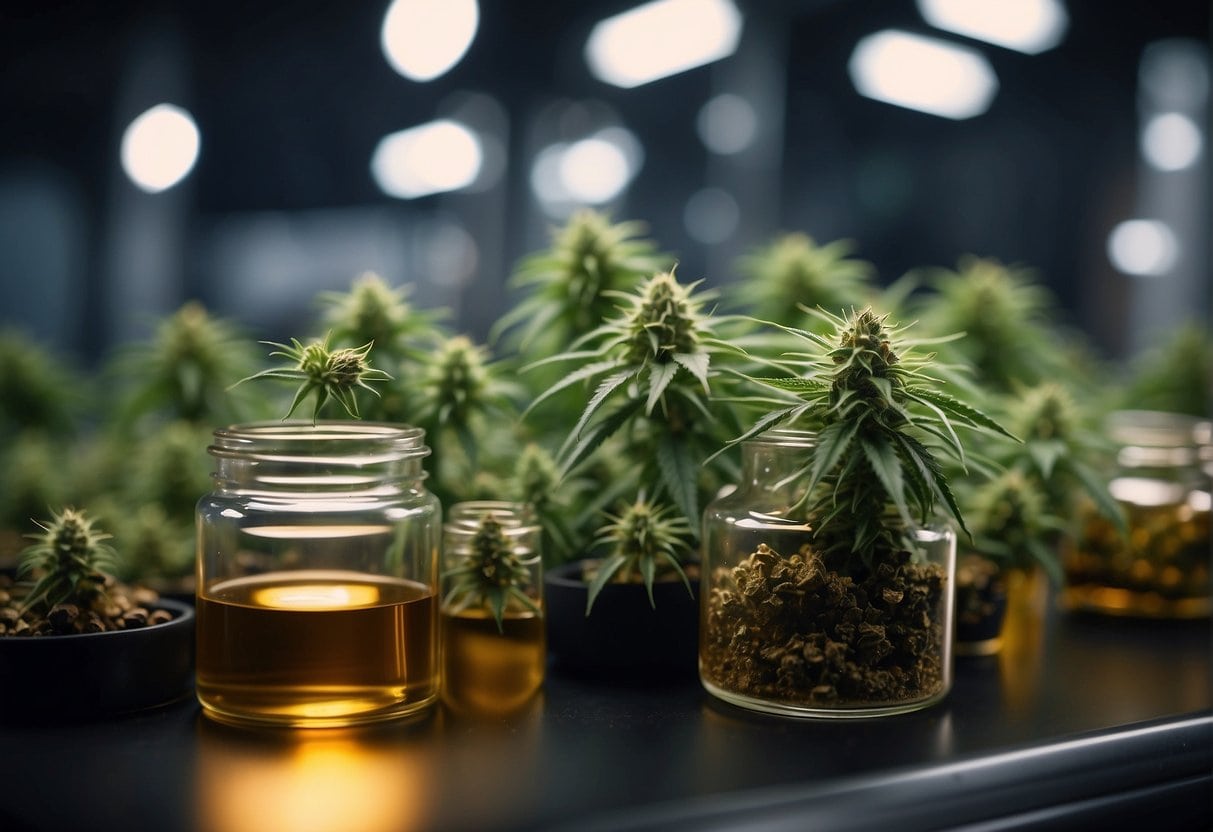
Understanding the chemistry of cannabinoids is essential for grasping how various compounds within the cannabis plant interact and transform. These changes are significant, especially when considering the conversion of acidic cannabinoids into their neutral counterparts.
Acidic Cannabinoids
Acidic cannabinoids are the raw, unactivated forms of cannabinoids found in the cannabis plant. Among the most prominent are Cannabidiolic Acid (CBDA), Tetrahydrocannabinolic Acid (THCa), and Cannabigerolic Acid (CBGA). The process of converting these acidic compounds into their active forms is critical. For instance, CBDA is converted into Cannabidiol (CBD) through decarboxylation, a reaction often induced by heat.
Neutral Cannabinoids
After the decarboxylation process, the acidic cannabinoids are transformed into their neutral, more commonly recognized forms. Tetrahydrocannabinol (THC), which is derived from THCa, is well-known for its psychoactive effects. Similarly, CBDA becomes CBD, noted for its therapeutic potential without producing psychoactive effects.
Chemical Constituents
The chemical constituents of cannabinoids include various arrangements of carbon, hydrogen, and oxygen atoms. CBD and THC share the same molecular formula but have different structures, resulting in distinct effects on your body. Their formation from precursors such as CBGA, the “mother cannabinoid,” is a critical part of the cannabinoid biosynthetic pathway.
CBDA to THCa Conversion Process
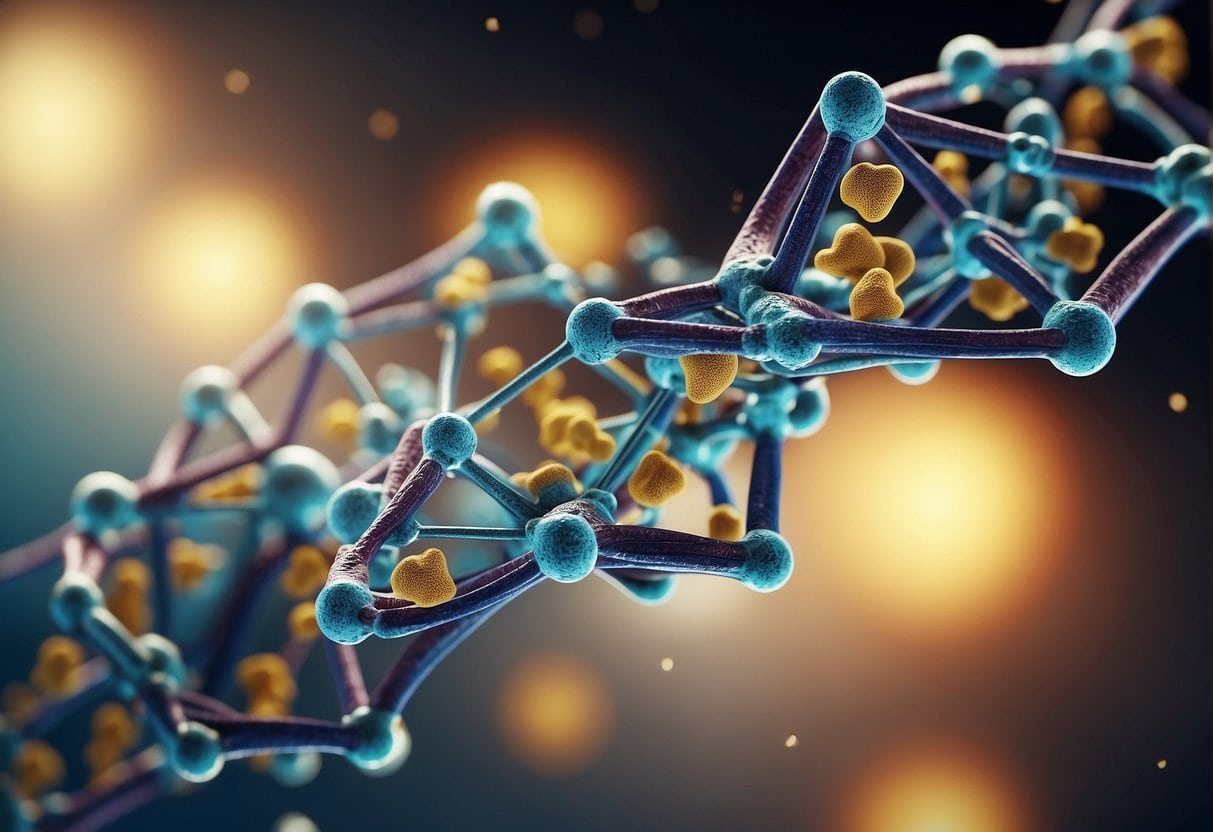
In exploring the conversion from CBDA to THCa, it’s important to understand this is not a typical conversion process. CBDA (Cannabidiolic acid) and THCa (Tetrahydrocannabinolic acid) are distinct compounds produced by the cannabis plant. There is no direct conversion pathway from CBDA to THCa—each is synthesized from a common precursor, CBGA (Cannabigerolic acid), through separate enzymatic reactions.
Decarboxylation Mechanism
The decarboxylation process involves the removal of a carboxyl group from cannabinoids through the application of heat, which transforms the compounds into their active forms. For example, when CBDA is subjected to heat, it loses a CO2 molecule, converting into CBD. Similarly, THCa decarboxylates to THC. The optimal temperature for decarboxylation varies, with a common range being between 105-145°C (220-293°F), which facilitates this conversion without significant degradation.
Degradation Pathways
Degradation pathways become significant in the context of improper storage or excessive heating. Cannabinoids can degrade into various compounds; for instance, THCa can degrade into CBN (Cannabinol) under prolonged exposure to heat or light. Degradation can also occur in the presence of ethanol or formic acid, common solvents in extraction processes, which can alter the stability of cannabinoids.
Factors Influencing Conversion
Factors influencing cannabinoid conversion include temperature, pressure, water content, and pH levels. Heat is the primary factor that triggers decarboxylation, while pressure and solubility in different environments (such as water or ethanol) can affect the rate and efficiency of conversion. The pH level, a measure of acidity or alkalinity, can influence the state of cannabinoids and their reaction pathways.
Enzymatic Conversion
In the cannabis plant, enzymes are responsible for converting CBGA into CBDA and THCa. This process of biosynthesis involves specific enzymes—THCa synthase and CBDA synthase. These enzymes are highly selective and do not interconvert between THCa and CBDA. External factors such as temperature and nitrogen availability can influence enzyme activity, impacting the levels of THCa and CBDA produced by the plant.
Analytical Techniques
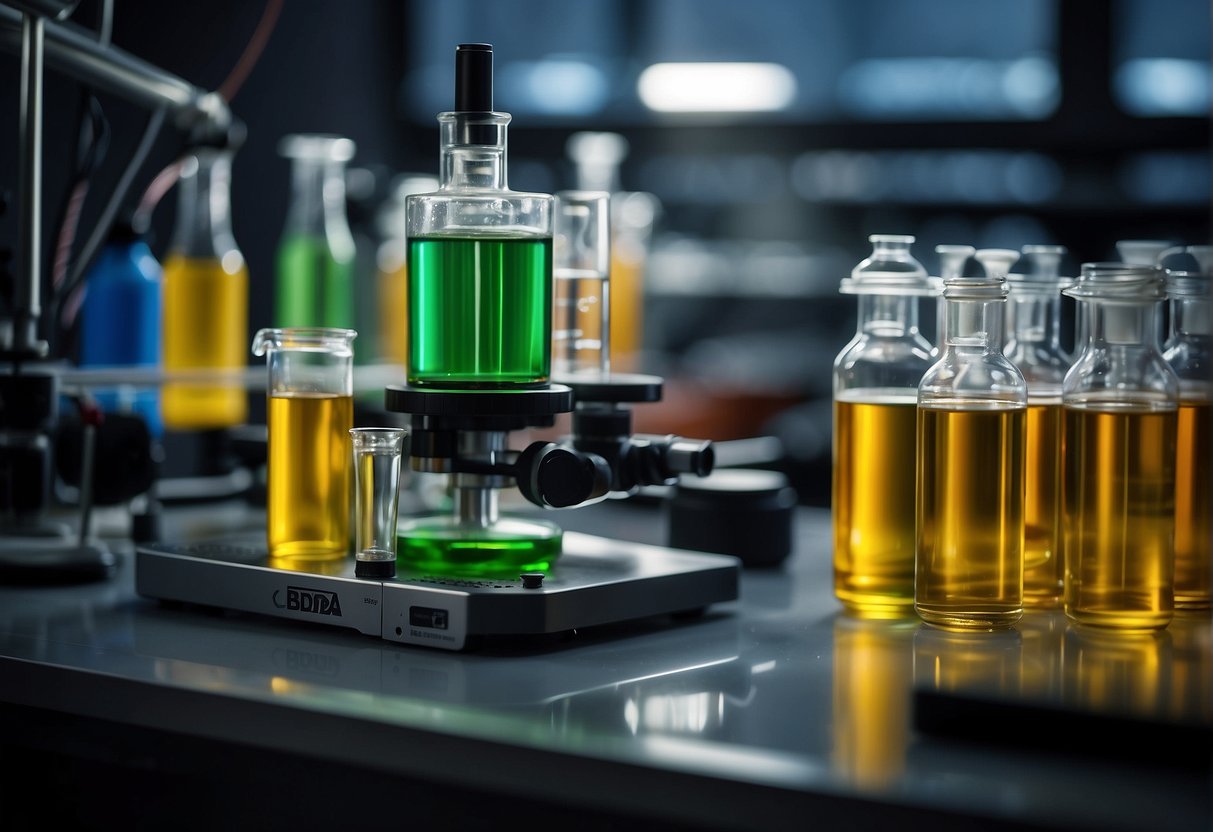
In exploring the conversion of CBDA to THCa, your understanding of reliable analytical techniques is crucial. These methods ensure the precise quantification and monitoring of cannabinoid profiles.
High-performance Liquid Chromatography (HPLC)
High-performance Liquid Chromatography (HPLC) is a cornerstone in cannabinoid analysis. Its accuracy in separating and quantifying cannabinoids makes it a preferred method. HPLC is versatile and can analyze the cannabinoids in their acid and neutral forms without the need for decarboxylation, thus maintaining the integrity of the metabolites.
Mass Spectrometry Analysis
Mass Spectrometry, often coupled with Liquid Chromatography (LC-MS), provides detailed insights into the molecular makeup of cannabinoids. The technique’s high sensitivity allows for the detection and analysis of a wide range of cannabinoids, including THCa and CBDA. This method gives you the mass-to-charge ratio of each molecule, aiding in their identification and quantification.
Gas Chromatography Techniques
Gas Chromatography is traditionally used for the analysis of volatile compounds. However, it requires the decarboxylation of cannabinoids like CBDA into CBD before analysis, which can result in the alteration of the sample’s original composition. Despite this, Gas Chromatography remains useful for evaluating the end products following decarboxylation.
Other Analytical Methods
Aside from HPLC, LC-MS, and Gas Chromatography, other methods such as Thin Layer Chromatography (TLC) and various color tests can be applied, albeit often with less specificity and quantification capabilities. These methods can serve as preliminary tools to identify the presence of certain cannabinoids before more thorough analysis with the aforementioned techniques.
Practical Applications and Implications
Understanding the conversion of Cannabidiolic Acid (CBDA) to Tetrahydrocannabinolic Acid (THCa) is crucial for both medical and recreational cannabis use. It influences the therapeutic properties and legality of cannabis products.
Medical Cannabis Utilization
When considering medical cannabis, the conversion process from CBDA to THCa is pivotal as it affects the compound’s pharmacological effects. For instance, CBDA is non-psychoactive and is recognized for its potential anti-inflammatory benefits. Through decarboxylation, a process involving heat, CBDA can be converted to THC, the principal psychoactive component in cannabis. This conversion is instrumental in the medicinal cannabis sphere, providing relief for patients. The appropriate conversion can ensure the potency of THC in medical cannabis products, which can be critical for their inclusion in the pharmacopeia.
Recreational Cannabis Considerations
In the realm of recreational use, the knowledge of how CBDA transforms into THCa, and eventually into THC, the main psychoactive ingredient, guides users in selecting cannabis plants or products for their desired effects. The THC concentration can define the legality and psychoactive quality of the product. As legalization spreads, users in regions with legal recreational cannabis can customize their experiences by seeking out specific seed oil extracts or strains with precise CBDA and THCa contents. The careful control of this conversion process is essential in managing the potency and therefore, the legality of cannabis products for recreational use.
Legislation and Regulation
In navigating the complex landscape of cannabinoids, you’ll find that the legal and regulatory status varies widely worldwide and greatly influences the market and scientific research related to substances like cannabidiol (CBD) and tetrahydrocannabinolic acid (THCa).
Cannabis Legalization Globally
Countries around the globe are at various stages of cannabis legalization affecting both THC and CBD products. Wherever you are, it’s crucial to understand whether cannabis, including its various cannabinoids, is permitted, restricted, or prohibited. In some regions, CBD is fully legal while THC remains a controlled substance due to its psychotropic effects.
Controlled Substance Classifications
The classification of controlled substances significantly impacts cannabinoid research and usage. Cannabinoids like THCa and CBD often fall under different legal categories. THCa is a direct precursor to THC, making its legal status often commensurate with THC. Meanwhile, CBD may be subject to less stringent controls, given its non-psychotropic nature.
Industrial Hemp vs. Cannabis Cultivars
The distinction between industrial hemp and cannabis cultivars centers around THC content. Hemp is typically characterized by high CBD and low THC levels, usually below 0.3%, making it legal in many places for uses like seed oil production and fiber. In contrast, cannabis cultivars with higher THC are regulated more strictly, and the applicability of such regulations directly affects the conversion dynamics between CBDA and THCa, as well as research and development in the sector.
Cannabis Plant Cultivation and Harvesting
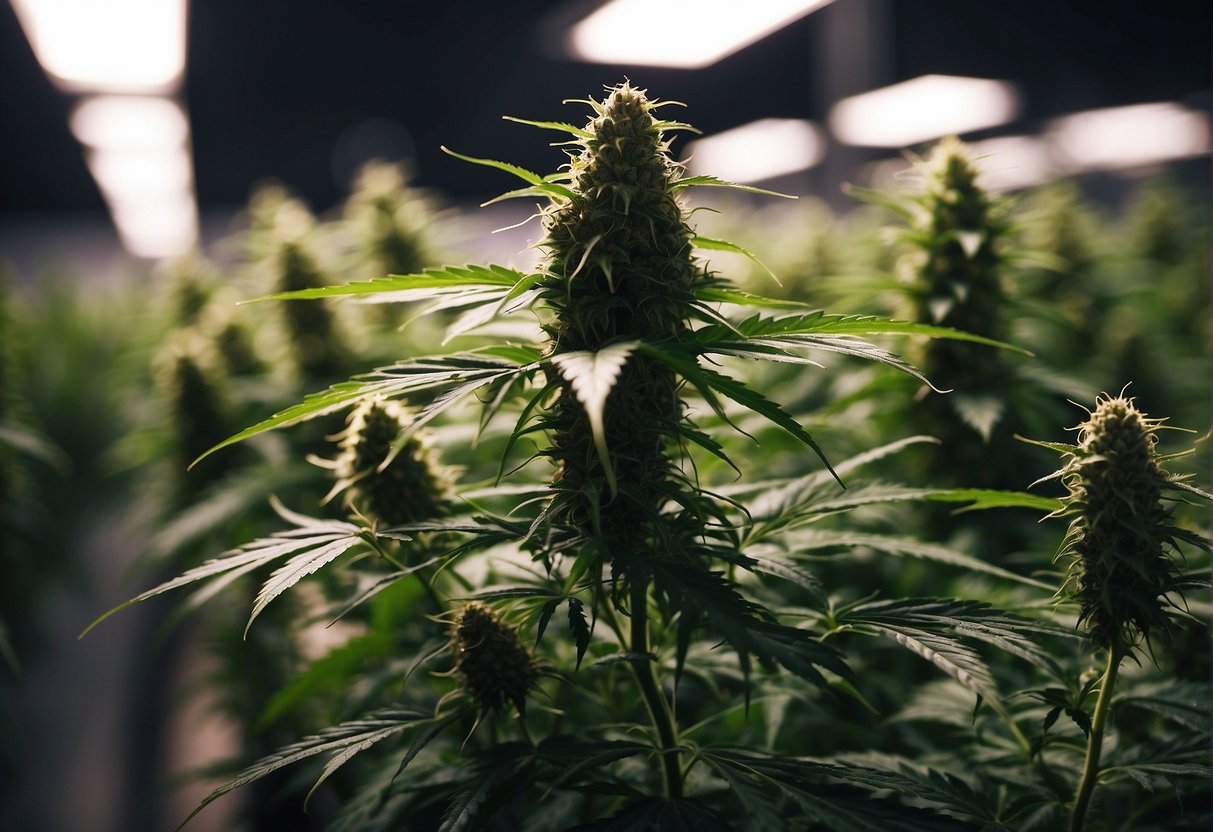
Before you embark on cultivating Cannabis sativa, understand the importance of strategic cultivation techniques and precise harvesting processes. These steps are crucial for optimizing cannabinoid content, such as CBDA and THCa, and ensuring the quality of the final product.
Cultivation Techniques
When growing cannabis plants, you must select a method that suits your operational goals and complies with regulatory standards. Traditional soil and hydroponic systems are the most common cultivation methods. Soil cultivation enhances the terpene profile and potentially increases the plant’s resistance to pests and diseases. On the other hand, hydroponic systems may result in faster growth and a controlled nutrient regimen, directly affecting cannabinoid production like CBDA and THCa.
- Soil Cultivation: Provides a natural buffer for roots, relies on organic matter decomposition.
- Hydroponics: Involves nutrient solution delivery directly to roots, often results in higher yields.
Advanced techniques such as the use of microwave and ultrasound can further influence cannabinoid synthesis. For example, microwave-assisted drying can help in preserving cannabinoid content by speeding up the evaporation process, reducing the time for degradation of valuable compounds.
Harvesting and Processing
Harvest time is pivotal for ensuring the optimal levels of cannabinoids such as CBDA and THCa. You should harvest cannabis plants when trichome visibility indicates peak cannabinoid content. Once harvested, the correct drying and curing techniques must be employed to maintain cannabinoid and terpene profiles.
- Drying: A crucial step where moisture is reduced, typically requiring a controlled environment to prevent the growth of molds and the degradation of cannabinoids.
- Curing: Involves fine-tuning the evaporation of residual water and allows for the chlorophyll breakdown, which can enhance the plant’s flavors and textures.
The whole plant can be utilized, from fibers to leaves, depending on your end use. However, for medical-grade products, it is essential to adhere to stringent quality controls throughout the cultivation and harvesting stages to ensure the production maintains the desired levels of cannabinoids.
Advanced Topics in Cannabinoid Research
In exploring the complexities of cannabinoid science, you will encounter breakthroughs in isomerization processes, deep dives into pharmacology, fluctuations in cannabinoid profiles, and innovations in purification techniques.
Isomerization and Acid Precursors
You will find that the isomerization process is crucial in transforming acid precursors like CBDA into THCa. This chemical reaction is sensitive to factors such as temperature, as demonstrated by the kinetics of Cannabinoid decarboxylation. At lower temperatures, around 80°C, the conversion of CBDA into THCa is relatively slow, with the rate significantly increasing with temperature.
Clinical Studies and Pharmacology
Recent clinical studies have indicated that cannabinoids like THCa exhibit potential in treating conditions like Parkinson’s Disease and Epilepsy. Their acid precursors are being investigated for anti-inflammatory properties, with ongoing research aiming to understand the full pharmacological effects of cannabinoids.
Cannabinoid Profile Variation
Cannabinoid profiles can significantly vary, a disparity that occurs due to different cultivation techniques or extraction methods. Variations in cannabinoid profile affect not only the potency but also the therapeutic application of cannabis products, pointing to the importance of precise analytical methods.
Extraction and Purification Methods
When it comes to extracting pure cannabinoids, methods like high-performance liquid chromatography (HPLC) are employed. Efficient extraction and purification often use solvents such as ethanol, alongside careful consideration of terpenoids, which contribute to the aroma and therapeutic properties of cannabis. Ensuring purity is essential in both research settings and product formulation.
Frequently Asked Questions
In this section, you’ll find concise explanations addressing common inquiries about the conversion of CBDA to THCa, the role of enzymes in cannabinoid synthesis, and the molecular distinctions between these compounds.
What is the process for converting CBDA into THCa?
The conversion of CBDA (cannabidiolic acid) into THCa (tetrahydrocannabinolic acid) is not a process that occurs naturally. These are distinct compounds produced by the cannabis plant. CBDA is converted into CBD (cannabidiol), and THCa is converted into THC (tetrahydrocannabinol) through a process called decarboxylation.
How does THCa synthase influence the conversion of cannabinoids?
THCa synthase is an enzyme that catalyzes the conversion of CBGA (cannabigerolic acid) into THCa, the acidic precursor of THC. This enzyme is pivotal in the cannabinoid biosynthesis pathway, determining the potential THC content in cannabis plants.
Can you explain the chemical pathway from CBD to HHC?
The chemical pathway from CBD (cannabidiol) to HHC (hexahydrocannabinol) is complex and typically involves synthetic modification rather than a natural enzymatic process. As this pathway is not directly related to CBDA to THCa conversion, detailed mechanisms fall outside the scope of this topic.
What are the end products when CBD degrades?
When CBD degrades, it can yield various products, depending on the conditions. One common degradation product of CBD is CBN (cannabinol), especially under prolonged exposure to light, air, or heat.
What distinguishes CBDA from THCa in terms of molecular structure?
CBDA and THCa have similar molecular backbones but differ structurally at the position of certain functional groups, which results in differing acidic properties and pharmacological effects.
What is the specific formula used to convert CBGA into THCa?
The specific formula that describes the conversion of CBGA into THCa under the influence of THCa synthase can be summarized by a simple enzymatic reaction: CBGA + THCaS (enzyme) → THCa + H^+. However, this is a biological process inherent to the cannabis plant and does not occur in the conversion from CBDA to THCa.

